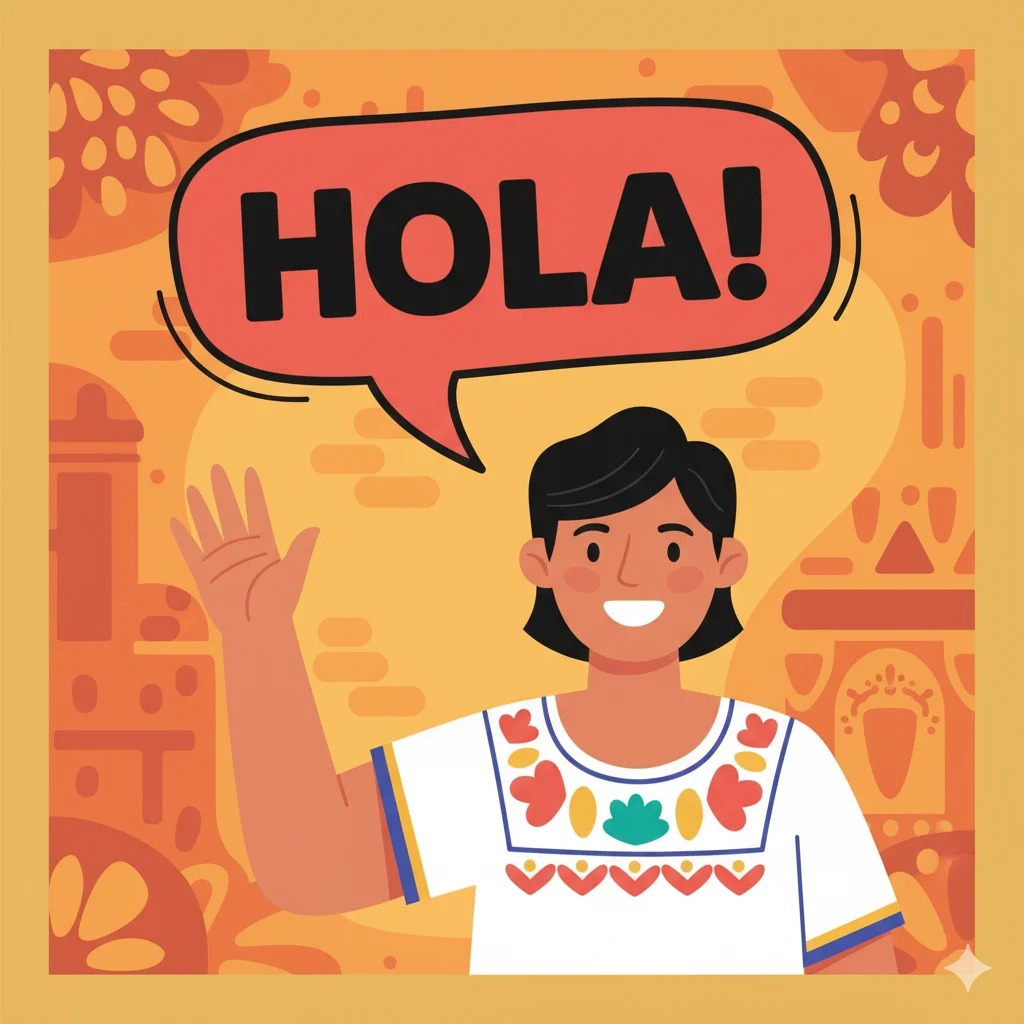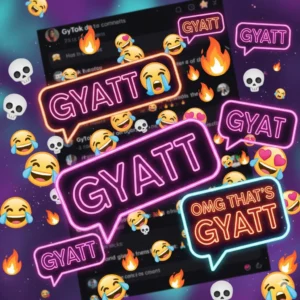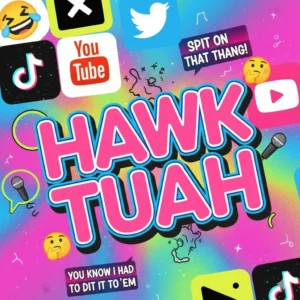Learning how to say hi in Spanish is one of the easiest and most useful ways to start speaking this beautiful language. Whether you’re planning to travel, meet new friends online, or simply want to sound polite when greeting someone, mastering a few Spanish greetings goes a long way.
In this complete guide, you’ll learn not only the word “hola” — which means hello — but also different ways to say hi in Spanish, both formal and informal. We’ll also cover pronunciation tips, regional differences, and the right times to use each phrase so you sound natural and confident in real-life situations.
🌞 What “Hola” Really Means — The Basic Spanish Hi
The most common way to greet someone in Spanish is “Hola” (pronounced OH-lah). It’s friendly, simple, and works at almost any time of day.
You can use hola when meeting friends, coworkers, or strangers, whether in person or online. It’s similar to saying “hi” or “hello” in English — universal, casual, and polite.
💡 Example:
- “Hola, ¿cómo estás?” — “Hi, how are you?”
- “Hola, buenos días.” — “Hi, good morning.”
Even though it’s one of the first words you’ll learn in Spanish, the way you say it — your tone, timing, and cultural awareness — makes all the difference.
🕒 Greetings by Time of Day
Just like in English, Spanish greetings can change depending on the time. Knowing when and how to greet people makes your Spanish sound more authentic and respectful.
| Time of Day | Greeting | Meaning | When to Use |
|---|---|---|---|
| Morning | Buenos días | Good morning | Before noon |
| Afternoon | Buenas tardes | Good afternoon | Noon to evening |
| Night | Buenas noches | Good evening / Good night | After sunset |
| Any time | Hola | Hi / Hello | Always acceptable |
👉 Pro Tip: You can combine “hola” with these greetings:
“Hola, buenos días” or “Hola, buenas tardes” to sound more polite.
🙋 Informal Ways to Say Hi in Spanish
When talking with friends, classmates, or people your age, you can use informal Spanish greetings that sound relaxed and natural.
Here are some popular ones you’ll hear in casual conversations:
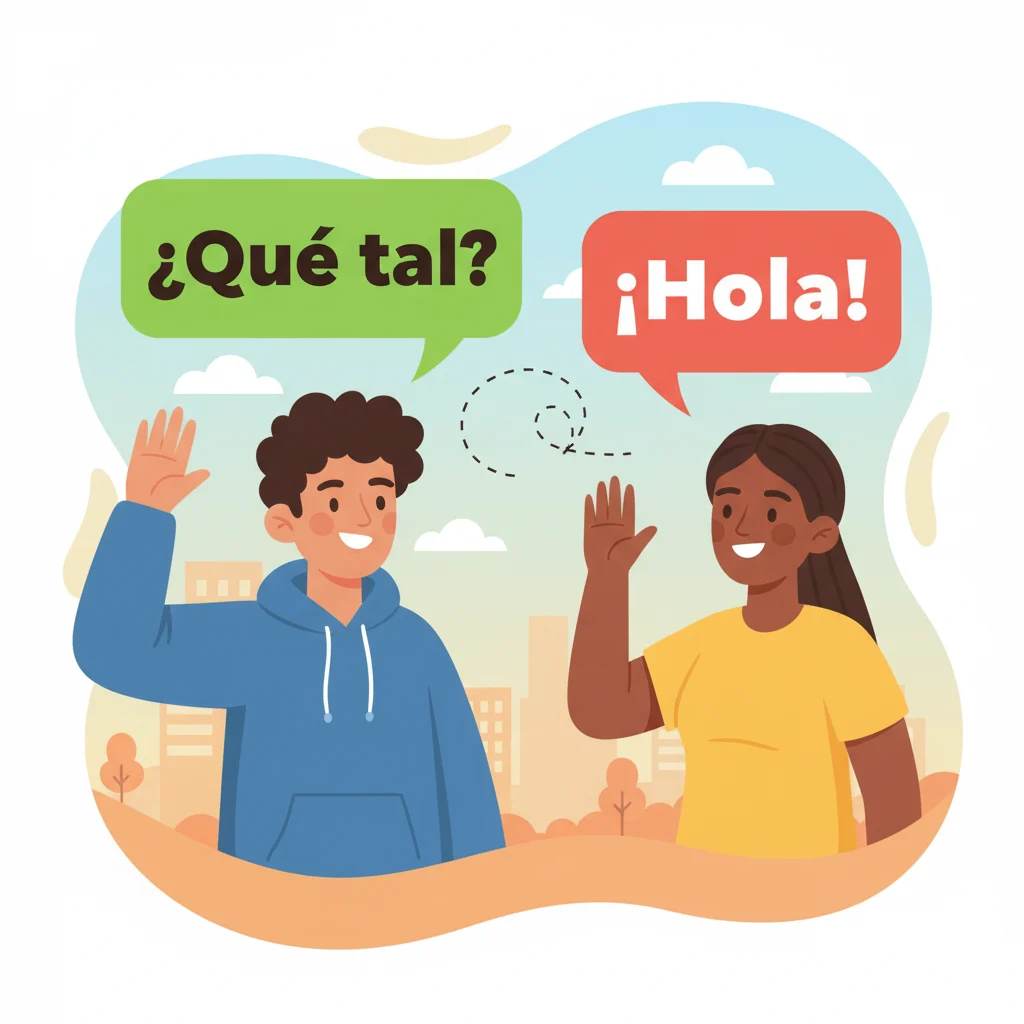
- ¿Qué tal? – What’s up? / How’s it going?
- ¿Cómo estás? – How are you? (informal “you”)
- ¿Qué pasa? – What’s happening?
- ¡Hola, amigo/amiga! – Hi, friend!
- ¿Todo bien? – Everything good?
💬 Example Conversation:
A: ¡Hola! ¿Qué tal?
B: Muy bien, ¿y tú?
These are great for texting, chatting, or greeting people in friendly settings.
🎩 Formal Greetings in Spanish
When greeting teachers, bosses, elders, or people you don’t know well, use formal Spanish greetings to show respect.

- Buenos días, señor / señora. — Good morning, sir/ma’am.
- Buenas tardes, señorita. — Good afternoon, miss.
- ¿Cómo está usted? — How are you? (formal “you”)
- Un placer conocerle. — A pleasure to meet you.
Even a simple “Hola, ¿cómo está usted?” sounds polite and professional. This matters in Spanish-speaking countries where formality shows good manners.
🌍 Regional Ways to Say Hi in Spanish
Spanish is spoken in more than 20 countries, so greetings can vary slightly by region. Here are some fun local variations:
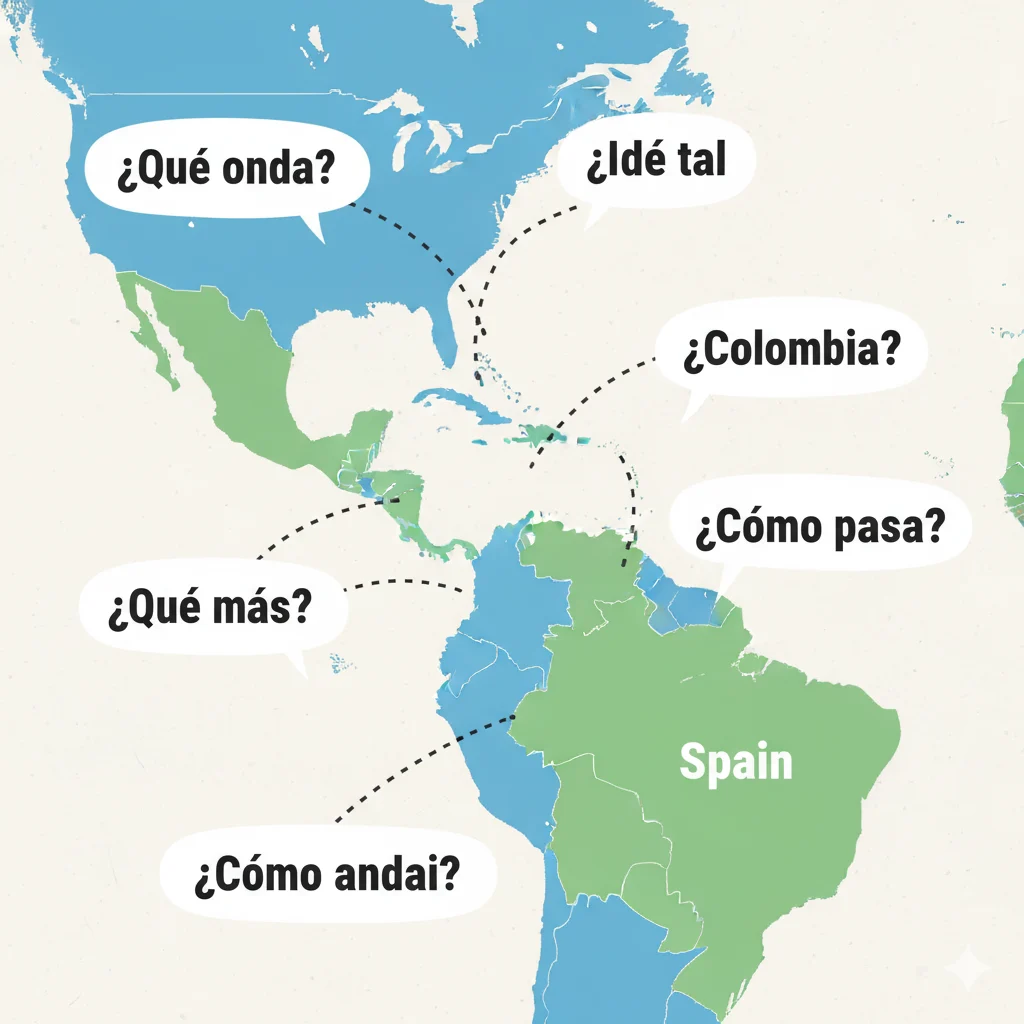
| Country | Common Greeting | Meaning |
|---|---|---|
| Mexico | ¿Qué onda? | What’s up? (very informal) |
| Spain | ¡Buenas! | Hi / Hello (short for “buenos días/tardes”) |
| Argentina | ¿Cómo va? | How’s it going? |
| Chile | ¡Aló! | Hello (often used on the phone) |
| Colombia | ¿Qué más? | What’s up? / How are you? |
| Puerto Rico | Dímelo | Tell me / What’s up? |
These greetings reflect cultural personality — fun, warm, and expressive. Using them correctly helps you connect faster with native speakers.
📞 How to Say Hi on the Phone or Online in Spanish
When answering calls, starting emails, or chatting online, you can use greetings that fit the situation.
Phone Calls
- “¡Hola, buenos días!” — Polite and professional.
- “¿Aló?” or “¿Diga?” — Used when answering the phone (Spain, Chile).
Emails or Messages
- “Hola [Name], espero que estés bien.” — Common in friendly messages.
- “Buenos días, [Name].” — More formal, used for work emails.
Always adjust your tone depending on who you’re talking to — formal with professionals, casual with friends.
🎙️ Pronunciation Tips to Sound Native
Spanish pronunciation is simple once you know the rhythm:
- The “h” in hola is silent — never say “ho-la.”
- Stress the first syllable: OH-lah.
- Smile slightly — Spanish greetings often sound cheerful.
To practice:
- Say each greeting slowly.
- Listen to native speakers on YouTube or language apps.
- Repeat until it feels natural.
Consistency and confidence are key to sounding fluent, not perfect pronunciation.
🎓 Cultural Etiquette When Greeting in Spanish
Spanish greetings are not just words — they’re gestures of warmth and respect.
Here’s what to remember when meeting people:
- 👋 A handshake is common in formal settings.
- 🤝 Friends often kiss on the cheek (one or two times, depending on country).
- 😊 Always make eye contact and smile when saying hello.
- 🗣️ Use “tú” for informal and “usted” for formal situations.
Being polite and culturally aware makes a lasting positive impression.
💬 Common Mistakes Beginners Make
- ❌ Saying the “h” in hola — it’s silent.
- ❌ Mixing “tú” and “usted” — know when to be formal.
- ❌ Using “buenas noches” as hello during the day.
- ❌ Translating English greetings word-for-word — Spanish has its own flow.
Learning from these small errors helps you sound more confident and natural.
📘 Summary — Mastering Spanish Greetings
Learning how to say hi in Spanish opens doors to conversations, friendships, and new cultural experiences. From hola to buenos días, each greeting reflects warmth and respect — the heart of Spanish communication.
Whether you’re greeting a teacher, a new friend, or someone online, remember:
- Use hola for any situation.
- Adjust greetings by time and formality.
- Respect cultural norms and pronunciation.
By practicing regularly and using the tips in this guide, you’ll soon greet people in Spanish with confidence — naturally and sincerely.
🤔 FAQs — How to Say Hi in Spanish
Q1. What is the most common way to say hi in Spanish?
A: The word “hola” is the universal way to say hi or hello in Spanish. It works in all situations.
Q2. What’s the difference between “hola” and “buenos días”?
A: Hola means “hi,” while buenos días means “good morning.” You can use both together politely.
Q3. How do you say hi in Spanish formally?
A: Say “Buenos días, señor/señora” or “Hola, ¿cómo está usted?” to sound respectful.
Q4. Are greetings different in Spain and Latin America?
A: Yes, each region has local expressions like ¿Qué onda? (Mexico) or ¿Qué más? (Colombia).
Q5. What is the correct pronunciation of “hola”?
A: The “h” is silent — pronounce it as OH-lah.
